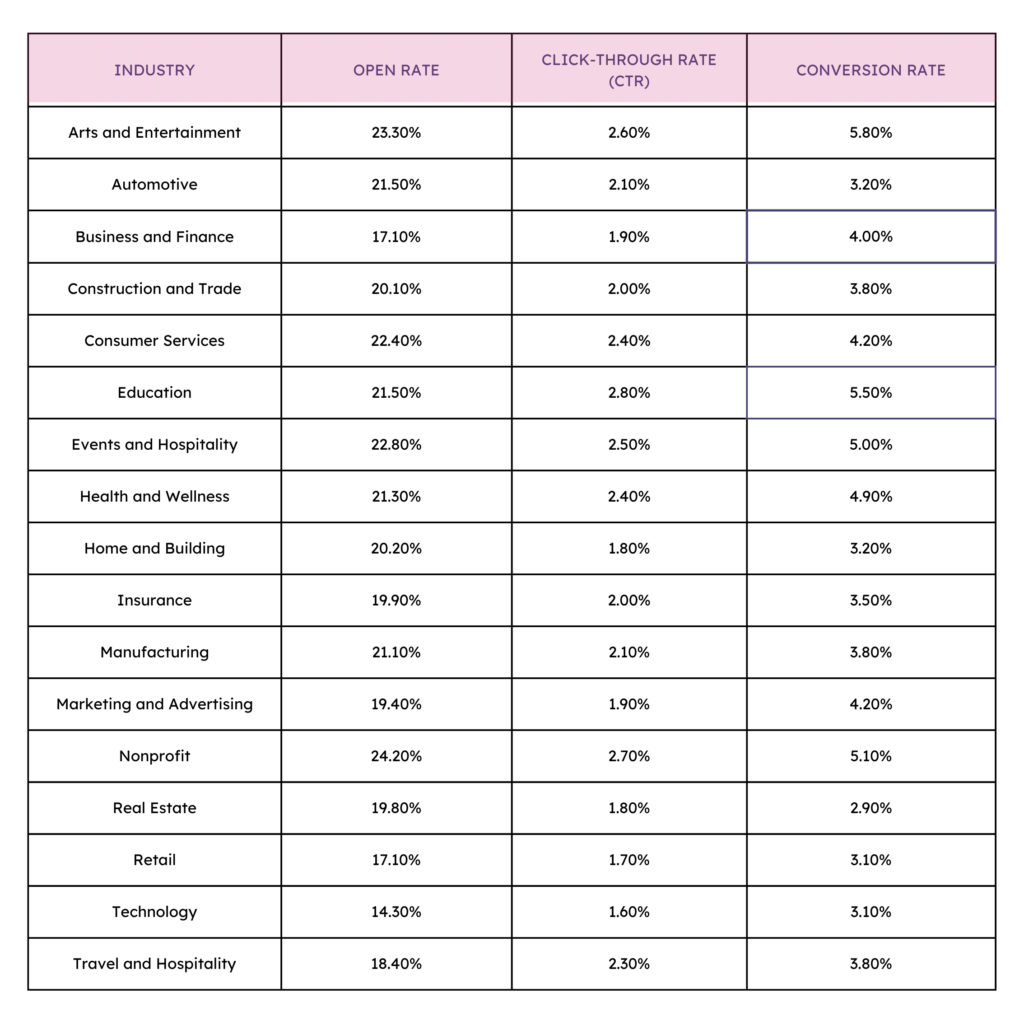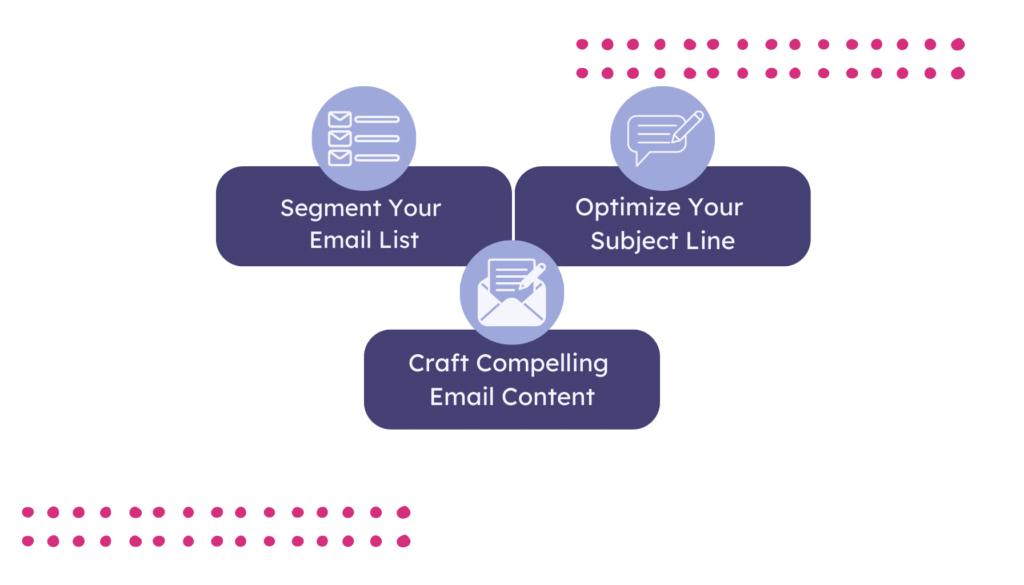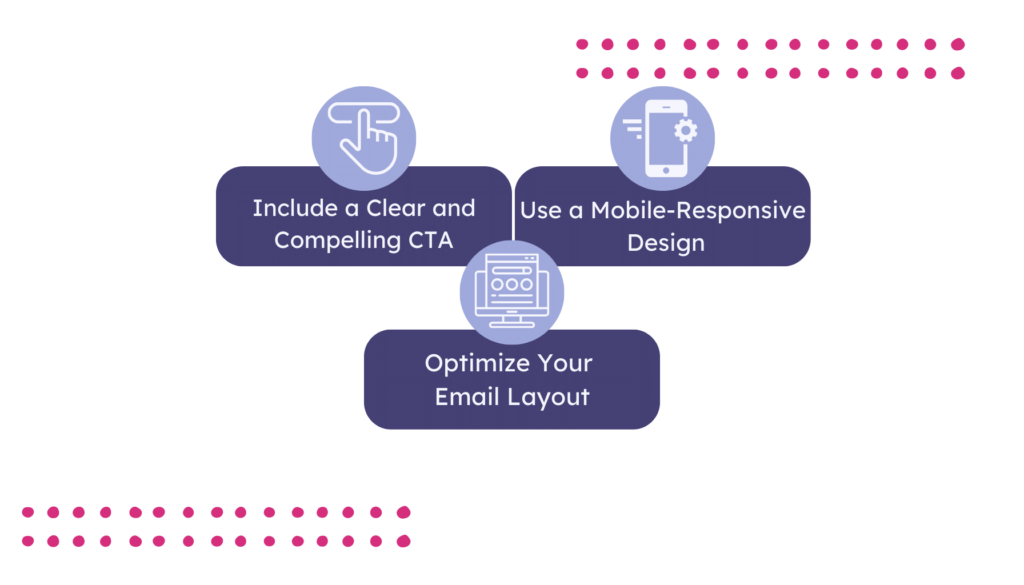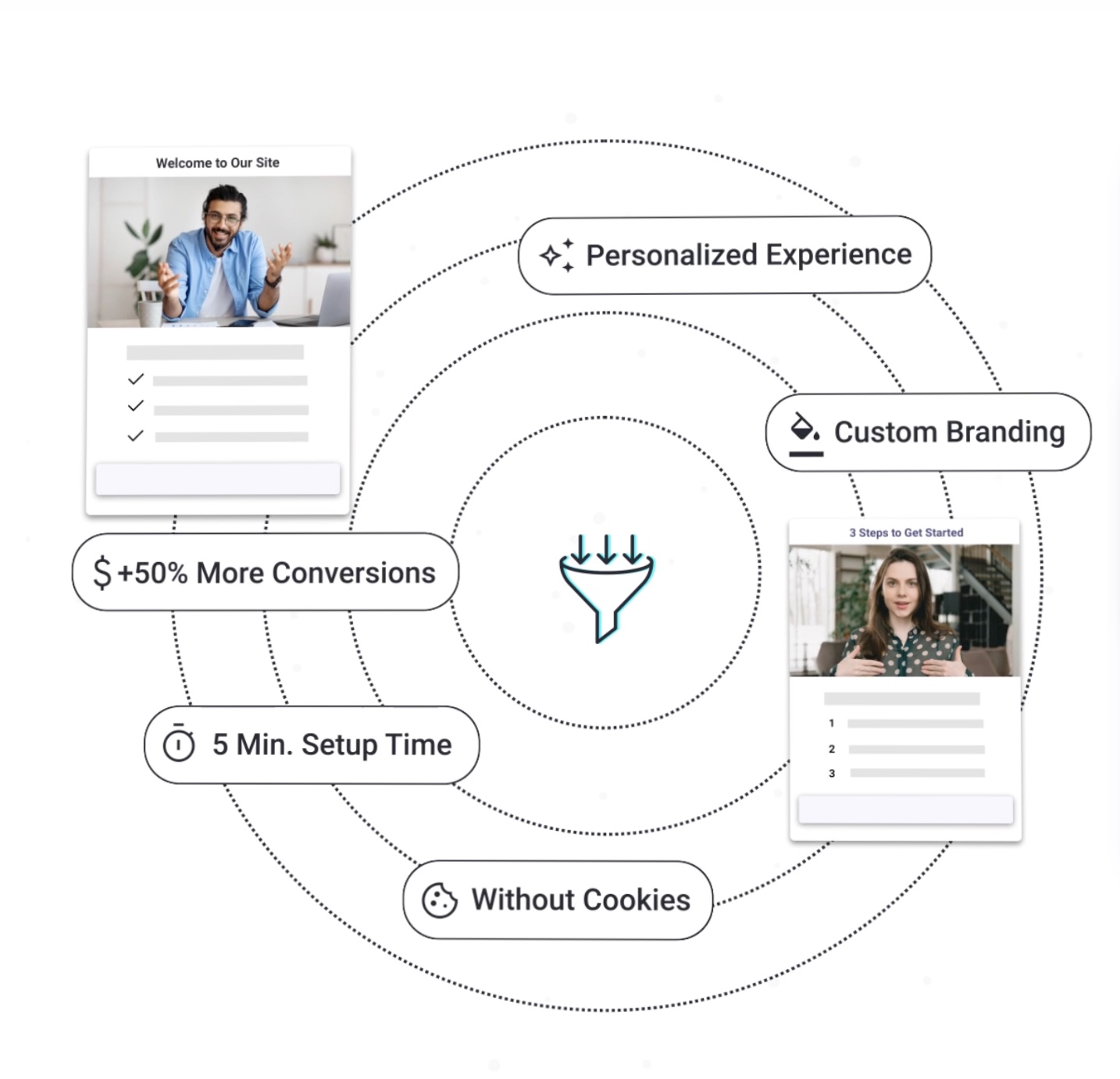How to Increase Conversion Rate in Email Marketing


Email marketing is one of the most effective digital marketing channels for engaging with your audience and driving conversions. However, simply sending out emails to your subscribers is not enough to drive the results you need. In order to be successful, you need to be strategic about how you use email marketing and optimize your approach to maximize conversions.
We’ll discuss the importance of conversion rates in email marketing and provide you with actionable strategies to improve your conversion rates. We’ll cover everything from segmenting your email list to designing effective email layouts and measuring your results to continually optimize your approach. By the end of this post, you’ll have a clear understanding of how to increase your email marketing conversion rates and drive more revenue for your business.
Understanding the Basics of Email Marketing Conversion Rates
Conversion rate is a key metric that measures the percentage of email recipients who take a desired action, such as making a purchase, filling out a form, or clicking a link within the email. To calculate your conversion rate, divide the number of conversions by the number of emails sent, and multiply by 100 to get a percentage.
Conversion Rate = (Number of Conversions / Number of Emails Sent) x 100
For example, if you sent out 10,000 emails and received 200 conversions, your conversion rate would be 2%.
Conversion Rate = (200 / 10,000) x 100 = 2%
However, there are other types of performance rates that you may want to track depending on your goals and objectives. These Include:
- Click-Through Rate (CTR): The percentage of email recipients who click on a link within the email. This metric can help you measure the effectiveness of your email content and CTAs.
CTR = (Number of Clicks / Number of Emails Sent) x 100
- Open Rate: The percentage of email recipients who open your email. This metric can help you measure the effectiveness of your subject lines and email preview text.
Open Rate = (Number of Emails Opened / Number of Emails Sent) x 100
- Conversion Rate by Source: The percentage of conversions that can be attributed to a specific source, such as a particular email campaign or landing page. This metric can help you determine which sources are most effective at driving conversions.
Conversion Rate by Source = (Number of Conversions / Number of Clicks) x 100%
Industry Benchmarks for Conversion Rates
While conversion rates can vary widely depending on your industry, audience, and other factors, it’s helpful to have a baseline for comparison.
Here are some industry benchmarks for conversion rates:

Strategies for Improving Email Marketing Conversion Rates
Segment Your Email List
Segmentation is the practice of dividing your email list into smaller groups based on common characteristics such as demographics, behavior, interests, and engagement level. By segmenting your list, you can create more targeted and personalized email campaigns that resonate with each group of subscribers, which can lead to higher open rates, click-through rates, and ultimately, conversion rates.
Segmentation allows you to tailor your messaging and offers to the specific needs and preferences of each group of subscribers. For example, if you’re a SaaS-based product, you could segment your list by industry, company size, job function, and past usage behavior to send targeted promotions and feature recommendations that are more likely to appeal to each group. By analyzing the specific pain points and interests of each segment, you can create personalized campaigns that effectively communicate the value of your product and encourage higher conversions.
In addition to improving engagement and conversion rates, segmentation can also help you better understand your audience and refine your marketing strategy. By analyzing the behavior and preferences of each segment, you can identify trends and insights that can inform your future campaigns and improve your overall ROI.
There are many ways to segment your email list, and the best approach will depend on your industry, audience, and business goals. Here are a few examples of effective segmentation strategies:
- Demographic Segmentation: Divide your list based on demographic factors such as age, gender, location, income, and education level. This can be useful for businesses that sell products or services that are more relevant to certain groups of people, such as luxury goods or education programs.
- Behavior-Based Segmentation: Divide your list based on the actions subscribers have taken, such as website visits, past purchases, email opens, and clicks. This can help you tailor your messaging and offers to each subscriber’s level of engagement and interest.
- Engagement Segmentation: Divide your list based on the level of engagement of each subscriber, such as how frequently they open or click on your emails, or how long it’s been since their last engagement. This can help you identify and re-engage inactive subscribers, and reward your most loyal subscribers with exclusive offers.
- Interest-Based Segmentation: Divide your list based on the interests and preferences of each subscriber, such as the types of content they’ve engaged with or the products they’ve purchased. This can help you send more targeted and relevant content and offers that are more likely to convert.
Optimize Your Subject Line
The subject line of your email is the first thing that your subscribers see when they receive your message, and it can have a significant impact on whether or not they decide to open it. In fact, studies have shown that up to 64% of recipients decide to open or delete emails based on subject lines. Therefore, optimizing your subject line can have a direct impact on your conversion rates.
An effective subject line should be attention-grabbing, relevant, and concise. It should convey the value proposition of your email in a clear and compelling way that entices your subscribers to open it. A well-crafted subject line can increase your open rates and ultimately, your conversion rates.
In addition, subject lines can also impact the deliverability of your emails. Many email service providers use engagement metrics such as open rates to determine whether to deliver your emails to the inbox or spam folder. If your subject line is not compelling enough to entice your subscribers to open your email, your deliverability may suffer.
Here are a few examples of effective subject lines that can help increase your open rates and ultimately, your conversion rates:
- Personalization: Use your subscriber’s name or other personal information to make your email feel more tailored and relevant. For example, “John, here’s an exclusive offer just for you!”
- Urgency: Create a sense of urgency by using words such as “limited time” or “don’t miss out” to encourage subscribers to act quickly. For example, “Last chance to save 50% on your purchase!”
- Curiosity: Use a subject line that piques your subscriber’s curiosity and encourages them to open your email to learn more. For example, “The one thing you’re missing to boost your sales.”
- Benefit-Driven: Highlight the benefits of your email in the subject line to entice subscribers to open it. For example, “Discover the secrets to a stress-free morning routine.”
Craft Compelling Email Content
Creating compelling email content is critical to achieving high conversion rates in email marketing. Once your subscribers have opened your email, the content must be engaging enough to keep their attention and motivate them to take the desired action.
The content of your email should align with your business goals and be tailored to your audience. It should provide value to your subscribers by educating them on relevant topics or offering solutions to their problems. This can help build trust with your audience and ultimately, increase your conversion rates.
Your email content should also have a clear and concise call-to-action (CTA) that directs your subscribers to take the desired action. This could be to encourage a purchase, sign up for a free trial, or download a piece of content. A clear and compelling CTA can significantly impact your conversion rates.
Here are a few examples of compelling email content that can help increase your conversion rates:
- Educational Content: Provide valuable educational content that helps your subscribers solve a problem or learn something new. For example, a health and wellness company might send an email with tips for staying healthy during flu season.
- Personalization: Use personalization in your email content to make your subscribers feel valued and understood. For example, if a subscriber of a marketing automation SaaS product frequently clicks on blog posts related to social media marketing, you could send them an email with curated content on the latest social media trends.
- Visuals: Use visuals such as images or videos to make your email more engaging and visually appealing. For example, an online course provider might include a video preview of their latest course in their email.
- Social Proof: Use social proof such as customer testimonials or reviews to build trust with your audience and motivate them to take action. For example, an e-commerce store might include customer reviews of a popular product in their email.

Include a Clear and Compelling Call-to-Action (CTA)
Including a clear and compelling call-to-action (CTA) is essential to achieving high conversion rates in email marketing. The CTA is the final step in the email marketing process and should guide your subscribers toward taking the desired action.
The CTA should be prominent and stand out visually from the rest of the email content. It should also be clear and concise in its messaging, telling your subscribers exactly what they need to do next. A strong CTA can significantly impact your conversion rates by motivating your subscribers to take action and move closer to becoming customers.
Here are a few examples of effective CTAs that can help increase your conversion rates:
- “Shop Now”: This CTA is commonly used by e-commerce stores and encourages subscribers to make a purchase. It’s straightforward and clear in its messaging.
- “Download Now”: This CTA is often used by businesses offering downloadable content, such as whitepapers or e-books. It tells subscribers exactly what to do and creates a sense of urgency.
- “Book a Demo”: This CTA is used by B2B companies offering software or services. It encourages subscribers to book a demonstration of their product or service.
- “Subscribe Now”: This CTA is used by companies that offer subscription-based services, such as streaming services or subscription boxes. It’s simple and clear in its messaging.
“More information” or “Learn more” can be effective CTAs if the subscriber is already interested in the product or service and wants to learn more before making a purchase or taking the next step. But they may not be as compelling as more specific CTAs that tell the subscriber exactly what to do next. For example, if the goal of the email is to get the subscriber to sign up for a free trial, a CTA like “Start my free trial” would be more effective than “Learn more.”
Use a Mobile-Responsive Design
With the increasing use of mobile devices for accessing emails, using a mobile-responsive design is crucial for achieving high conversion rates in email marketing. A mobile-responsive design ensures that your emails are optimized for viewing on a range of mobile devices, including smartphones and tablets.
A mobile-responsive design ensures that your emails are easy to read and interact with on mobile devices, which can significantly impact your conversion rates. If your email is not optimized for mobile, it can be difficult to read and navigate, leading to a poor user experience and potentially causing your subscribers to abandon the email without taking any action.
Additionally, a mobile-responsive design can improve the deliverability of your emails. Email service providers often prioritize mobile-optimized emails, as they provide a better user experience for mobile users. By using a mobile-responsive design, you can improve your email’s chances of reaching your subscribers’ inboxes and increase the likelihood of them taking action.
Here are a few examples of effective mobile-responsive designs that can help increase your conversion rates:
- Use a Single-Column Layout: A single-column layout is easier to read and navigate on mobile devices than a multi-column layout. It also ensures that the email is optimized for viewing on smaller screens.
- Use Large Font Sizes: Using larger font sizes can make it easier for mobile users to read the email content without having to zoom in. A font size of at least 14px is recommended for mobile devices.
- Use Clear and Concise Messaging: Mobile users have a shorter attention span, so it’s important to use clear and concise messaging that gets straight to the point. Avoid long blocks of text and use bullet points or short paragraphs to break up the content.
- Use Mobile-Friendly CTAs: The CTA should be prominent and easy to tap on a mobile device. Make sure the CTA is large enough and has plenty of whitespace around it to ensure it’s easy to tap.

Optimize Your Email Layout
The email layout refers to the arrangement of different elements in your email, such as images, text, and CTAs. A well-optimized email layout should have a clear hierarchy of information, with the most important elements placed at the top and the least important at the bottom.
A well-designed email layout can improve the user experience and make it easy for subscribers to navigate and take action on your email content. A clear and concise layout ensures that subscribers can quickly find the information they need, increasing the likelihood of them taking action on your CTA.
Here are a few examples of effective email layouts that can help increase your conversion rates:
- Use a Clear and Compelling Header: Your email header is the first thing subscribers will see, so it’s important to make it compelling and attention-grabbing. Use an eye-catching image or a clear and concise headline to encourage subscribers to read on.
- Place Your CTA Prominently: Your CTA should be placed prominently in your email, ideally near the top of the email or in a clear and visible section. Use contrasting colors to make the CTA stand out and ensure that it’s easy for subscribers to tap on mobile devices.
- Use Whitespace Effectively: Whitespace can help make your email content easier to read and navigate, so use it effectively to break up different sections and create a clear hierarchy of information.
- Use Images Strategically: Images can be a powerful tool for capturing subscribers’ attention and conveying information. Use high-quality images that are relevant to your content and support your messaging.
Testing and Optimization Strategies in Email Marketing
Testing and optimization are critical components of successful email marketing campaigns. By testing different elements of your emails and optimizing them based on the results, you can improve your conversion rates and achieve better results.
One of the most effective testing strategies in email marketing is A/B testing, also known as split testing. A/B testing involves creating two versions of an email and sending them to a random sample of your subscribers. The two versions differ in a single element, such as the subject line, the CTA, or the email layout.
Once you have sent both versions, you can analyze the results to see which version performed better in terms of open rates, click-through rates, and conversion rates. By using A/B testing, you can identify the most effective elements of your email and optimize them for better results.
Another testing strategy is multivariate testing, which involves testing multiple elements of an email simultaneously. This testing strategy is more complex than A/B testing, as it requires testing multiple variations of different elements, such as the subject line, email layout, CTA, and content.
Multivariate testing can be more time-consuming and require a larger sample size, but it can provide more comprehensive insights into which elements of your email are most effective in converting subscribers into customers.
Once you have identified the most effective elements of your email through testing, you can optimize your email content and design to improve your conversion rates, trying the strategies provided and understanding what works best for your company.
It’s important to remember the significance of a seamless user experience beyond the email itself. Once a subscriber clicks through to your website, it’s crucial to provide a landing page that is optimized for conversion. This means that the landing page should be relevant to the email content, load quickly, be visually appealing, and be personalized to the user’s intent. It should also provide a clear call to action that is consistent with the email message. A good user experience on the landing page can make or break the conversion process.
More Sales From Your Website With AI
Personalized interactions based on your users' behaviour to get +50% more conversions.

One tool that businesses can use to improve their landing pages is Pathmonk Accelerate. Pathmonk Accelerate is a conversion optimization platform that helps you create high-converting landing pages. The platform provides personalized experiences based on user behavior, allowing you to quickly and easily optimize your conversion rates. By using Pathmonk Accelerate in conjunction with the strategies outlined in this blog post, you can take a data-driven approach to improve your email marketing campaigns and achieve your desired outcomes.
Conclusion
Increasing conversion rates in email marketing requires a combination of technical knowledge, creativity, and testing. By understanding the basics of email marketing conversion rates and industry benchmarks, segmenting your email list, optimizing your subject lines and email content, using effective CTAs, and creating mobile-responsive designs and layouts, you can improve your email marketing results.
Additionally, testing and optimization strategies such as A/B testing and multivariate testing can help you identify the most effective elements of your email and optimize them for better results. By implementing optimization strategies such as personalization, simplifying content, creating urgency, using social proof, and optimizing for mobile, you can improve your conversion rates and achieve better results in your email marketing campaigns.





